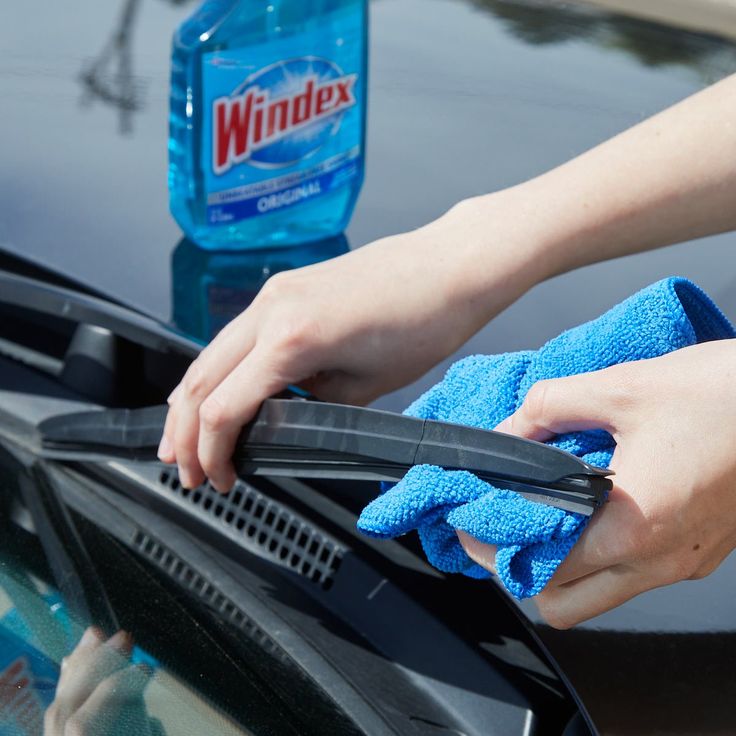Your polycarbonate windshield takes a beating. Just think of all the elements it comes in contact with through the course of a ride. Mud, dust, dirt, rocks, branches, and more—all of these things are inevitable when you’re hitting the trails, but none of them are good for your UTV windshield.
Keeping your windshield clean is important for many reasons. First and foremost, a clean windshield promotes visibility. We don’t know about you, but we like being able to see what’s ahead while we’re going 60+ MPH. But in addition to keeping you safe, a clean windshield just makes your machine look nicer. Proper care can also extend the life of your windshield, which leaves you with more money in your pocket.
Cleaning and caring for a polycarbonate windshield requires a very specific technique. Polycarbonate might be stronger than glass, but unless it’s hard coated, poly collects scratches more easily. That’s why you can’t just grab some Windex and bunched-up paper towels and go at it all willy-nilly. If you want your polycarbonate windshield to stay clean and pristine, there are some “dos” and “don’ts” that you should know.
Proper windshield care starts with the right supplies. But before we get into that, let’s start by looking at some items you should NEVER reach for when cleaning a polycarbonate windshield:
All of these materials will wreak havoc on a polycarbonate windshield, especially if it’s not hard coated (more on that later).
So what can you use? Polycarbonate windshield care is actually really simple. You’ll just need a few basic items that you probably already have at home:
You’ll just need a few basic items that you probably already have at home:
Once you have all of those things on hand, it’s time to start cleaning!
No fancy products needed when it comes to cleaning polycarbonate windshields! A mild dish soap or baby shampoo mixed with water does the trick.Start by spraying your windshield with warm, soapy water. Even if you’re using the world’s softest, most non-abrasive cloth, you should never wipe your windshield down without spraying it first. Without water to soften all that dried-on muck, you’re really just spreading mud (which contains gritty sand) back and forth, which can damage your windshield.
The dirtier your windshield is, the more water you’ll want to use. And if the mud is really caked on, you might even need to let it soak for awhile before moving on.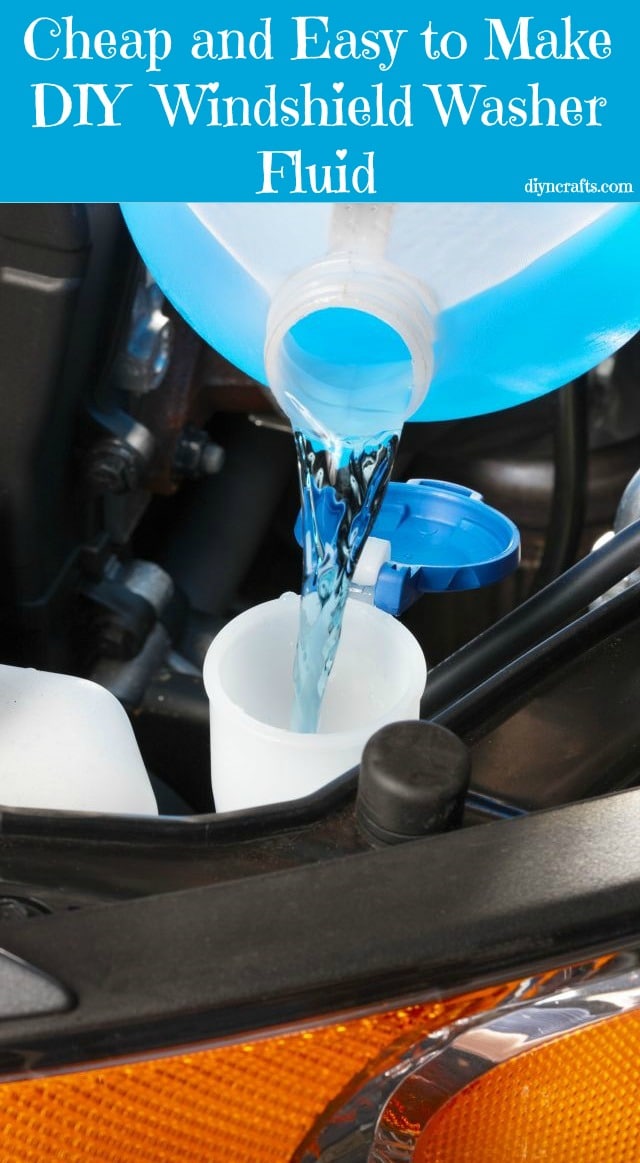
Once you’ve coated your dirty windshield in water, use your microfiber cloth to gently wipe back and forth. Never use circular motions when cleaning polycarbonate. A back-and-forth motion is better because you’re pushing dirt to the sides, rather than dragging it around in circles—another potentially damaging habit.
Another helpful tip is to flip to a clean section of cloth after every pass. This helps you avoid trapping dirt particles in your microfiber cloth.
After you have gently wiped all of the gunk and debris off your windshield (and we can’t emphasize the word “gently” enough), it’s time to rinse. Gently (there it is again!) pour or spray water over the windshield to rinse all of the soap off.
Now it’s time to dry! To avoid collecting water spots, use a clean chamois and blot your windshield dry. The key here is blotting—don’t rub or wipe down your windshield with a chamois, because again, that could lead to unwanted scuffs.
It only takes some basic supplies and a few short, simple steps to take your polycarbonate windshield from muddy and messy to sparkling clean.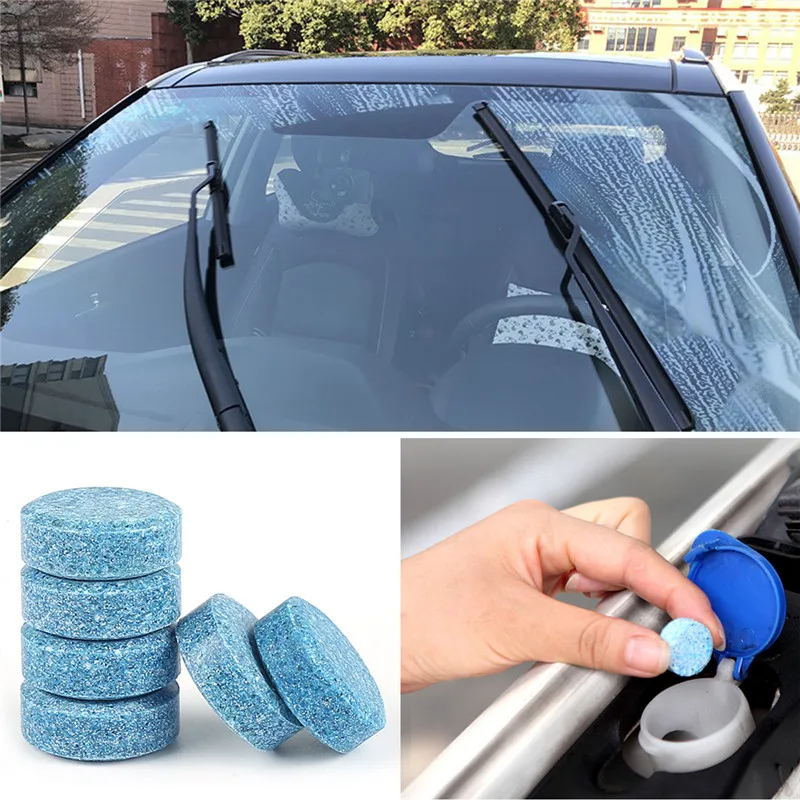
Sometimes things get a little out of hand when riding (in the best way, of course) and you end up totally covered in mud while still miles from home. It’s fun, sure, but you still need a clear windshield to make it back.
Because cleaning a polycarbonate windshield requires such basic supplies, keeping it clean while on the go is a piece of cake. Just make sure you have these materials stashed away somewhere:
Knowing how to properly clean a polycarbonate windshield is one way to keep yours looking good, but it’s not the only thing you should be doing in terms of windshield care.
Here are some other tips for extending the life of your UTV windshield.
Don’t wait until your windshield is absolutely covered to clean it.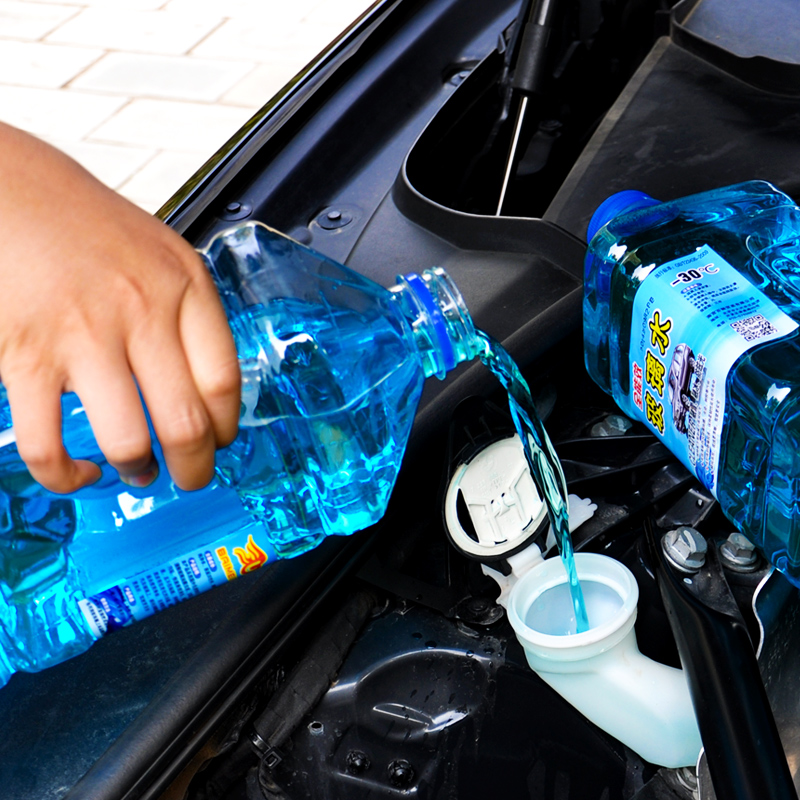 You can wear that caked-on mud like a badge of honor on your machine’s body work, but regularly cleaning your windshield will keep it looking new for longer. Get in the habit of doing a quick clean after every ride, even if it’s not that dirty.
You can wear that caked-on mud like a badge of honor on your machine’s body work, but regularly cleaning your windshield will keep it looking new for longer. Get in the habit of doing a quick clean after every ride, even if it’s not that dirty.
When you’re not riding, make sure to store your machine out of direct sunlight—preferably in a garage or shed. If you don’t have room in the garage, cover the windshield with a tarp or find somewhere shady. Ultraviolet (UV) rays from the sun can damage polycarbonate windshields over time.
Treatments like SuperATV’s proprietary XR Optic Hard Coating greatly extend the life of a polycarbonate windshield. XR Optic provides unmatched scratch and abrasion resistance. It also offers protection against those UV rays we were just talking about, so you won’t have to worry about your windshield turning cloudy or discolored over time.
One way to extend the life of your polycarbonate windshield is to keep it out of the sun when you’re not riding. This can be done by parking it in a garage or using a windshield cover—or both, as seen here!
This can be done by parking it in a garage or using a windshield cover—or both, as seen here!Haven’t purchased a UTV windshield yet? SuperATV carries a wide selection of windshields in all different styles. Whether you go with full, flip, half, or rear, they’re all manufactured and packaged right here in Madison, Indiana.
One thing we hate to see: someone having to replace a windshield because of something so simple as cleaning it wrong. So, what do you clean UTV windshields with? We’re going to cover the dos and don’ts of cleaning polycarbonate—what products work, what products don’t and give tips for the long-term health of your UTV windshield.What is polycarbonate?
Polycarbonate is what’s known as a thermoplastic: a material that, when heated and cooled, forms into a transparent plastic sheet. It’s used in UTV windshields because it’s more impact-resistant (250X more!) and flexible than glass. As an added benefit, it does great at insulating a sealed cab. This is all super important when you’re out on the trails.
As an added benefit, it does great at insulating a sealed cab. This is all super important when you’re out on the trails.
Plexiglass, also known as acrylic, is a clear plastic material that really only has one significant benefit over a polycarbonate windshield: It’s cheap. With a significantly lower resistance to rocks, debris, and cracking, this is the option that budget-conscious riders will typically go for.
These plexiglass windshields typically come in 3/16” / 4mm thickness, and are fairly easy to clean.
Now that we know how it’s different and why it’s time to go over the biggest mistakes people make when cleaning their UTV windshield. These are the common chemicals and cleaners that do some serious damage.
Polycarbonates can start to deteriorate, leading to structural failures, when exposed to direct contact with certain chemical vapors and mist. Windex, and many other household cleaners, are on that list.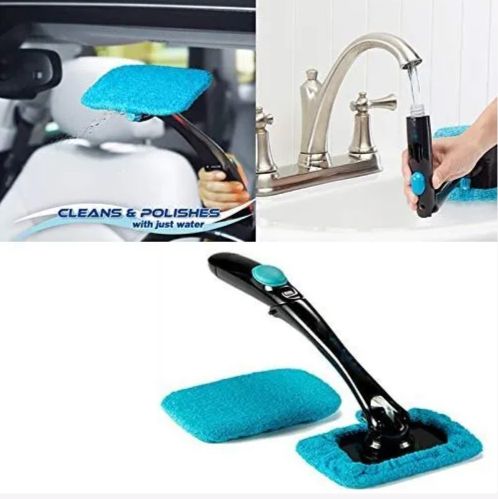 In addition, the luminaire integrity (a rating for light visibility) goes downhill with it.
In addition, the luminaire integrity (a rating for light visibility) goes downhill with it.
That’s what is happening when you see a UTV windshield with fading, color changes, whitening, or even cracking. The most likely areas to break are along edges and pressure points. Need a replacement UTV windshield? Find one here.
BILLY’S PRO TIP: Overall, there’s one golden rule for the regular riders (without a Master’s in Chemistry): If it ends in -ene, -one,-ile, -ine, or -ace, don’t put it on your UTV windshield. So, if all those chemicals are out, what are you supposed to use to clean your UTV windshield?
With Windex, 409, and a whole host of other products off the table for polycarbonate and plexiglass, there’s a really simple set of supplies you need to get your windshield clean as can be. The secret ingredient: dish soap. Like Dawn or Palmolive. It’s that simple!
A good way to think about it is: when you wash your dishes, does the detergent seep into your plates, glasses, and plastic cups? No—because it was designed that way.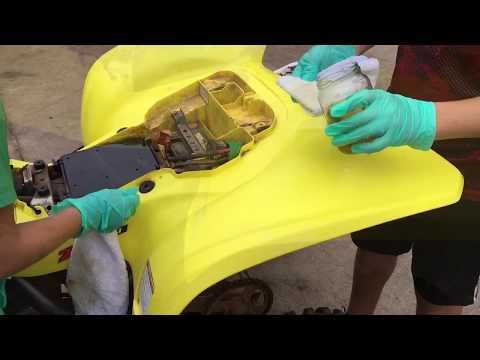 So, alongside water, vegetable oils, and neutral salt solutions, the detergent will attack grease, grime, and mud but isn’t strong enough to mess with your windshield.
So, alongside water, vegetable oils, and neutral salt solutions, the detergent will attack grease, grime, and mud but isn’t strong enough to mess with your windshield.
Get ready—this list is a doozy:
Think you can handle it? We know it’s short, but the simple solution’s sometimes best. Mentioned in order of when they’re used, we’ll cover the best way to clean a polycarbonate or plexiglass windshield in a few quick steps.
PLEXIGLASS/ACRYLIC PRO TIP: The easiest way to clean your side by side’s acrylic or plexiglass windshield is to buy an acrylic and plexiglass cleaning solution, and use a microfiber cloth. After spraying and wiping, it’s important to rinse the windshield with clean water.
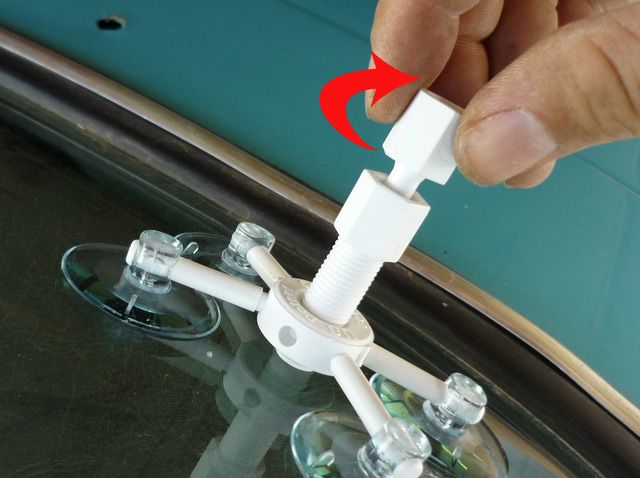
Even with four items and five steps, the best way to clean a polycarbonate UTV windshield is a lot easier than people think. So, with that understanding, it’s important to learn how to extend the life of your UTV windshield.
Just like your other vehicles, regular cleaning is one of the best ways to protect the outside of your ride. Most SxS riders who’ve kept their windshields in peak condition say they wash them after almost every ride.
Just as important, things other than chemicals can damage a UTV windshield. The most frequent reason we see UTV windshield replacements are warping or stress cracks from extended time in the sun.
UV light is already mean enough to our skin—don’t let it beat up your buggie too! Always try to park your UTV in a cool, shady place. If you can, a garage or shed is the best call.
A coated UTV windshield will last longer because of enhanced scratch protection. When cleaning, it’s even more important to ensure that the microfiber cloth and Shammy you use are fresh-out-of-the-dryer clean. This ensures that nothing damages the coat so much that it starts to rip.
When cleaning, it’s even more important to ensure that the microfiber cloth and Shammy you use are fresh-out-of-the-dryer clean. This ensures that nothing damages the coat so much that it starts to rip.
Get Replacement UTV Windshields
If you’re beginning to see warping, cracks, or discoloration, it’s not just an annoyance—it can be a safety issue for you and your riders. SBSS carries top brands like Seizmik and Falcon Ridge in multiple thicknesses, tints, and options for full, half, and foldable UTV windshields. In addition, many of their UTV windshields provide free shipping!
See our full selection here
Every motorist is familiar with the unpleasant situation that occurs when the temperature drops outside, when an ice crust forms on the windows of the vehicle. Driving with restricted vision is very dangerous and prohibited by traffic regulations. Consider the basic rules of prevention and the most popular ways to eliminate frozen ice.

Practice-tested methods will help to minimize the likelihood of icing:
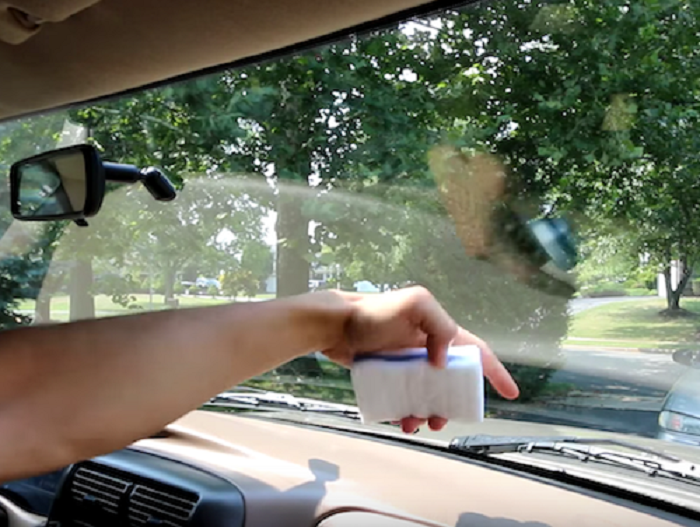
One of the following cleaning methods will help resolve this issue quickly. nine0003
A large selection of special tools according to their external shape and material is divided into two types:
It is recommended to use the scraper at the smallest possible angle. And in order to avoid scratches on the glass surface, after each use of the scraper, its tip should be cleaned of solid particles that accumulate during cleaning. nine0003
An unnecessary old discount or bank card can be an alternative to a scraper. The main thing is that it should be a plastic card, not a business card made of laminated cardboard. It should also be used, applying it at a minimum angle to the glass. But you have to be very careful not to scratch the glass.
Two-step procedure:
Important! Never use technical alcohol, as its vapors are toxic.
Softening the appearance of a crust on the windshield is easily achieved with ordinary water at room temperature.
Important! A sharp change in temperature - for example, when using hot water - is almost always accompanied by the appearance of cracks on the glass. Also, water after removing ice from the glass freezes on other elements of the car. We do not recommend this method. nine0003
With a solution of 2 tablespoons of salt in a glass of water, carefully wipe the surface of the icy windshield and blot with a soft glass cloth. Be careful, as salt is an activator of the corrosion process, therefore it is highly undesirable to leave it on the surface of the car.
Be careful, as salt is an activator of the corrosion process, therefore it is highly undesirable to leave it on the surface of the car.
In conclusion, one more life hack on how to quickly get rid of the ice glaze on the windshield. A bag of rice will help. Groats are poured into a tight bag (or mitten), which is heated in the microwave for no longer than a minute, after which it is used to wipe the windshield from inside the car. The temperature of the window will rise and the crust on the outside will thaw. nine0003
Important! The wipers are switched on only after they have been cleared of the formed ice.
 Road dust with sand also contributes, mercilessly bombarding the glass. The AutoView portal offers quick and cheap ways to get rid of scratches. nine0003
Road dust with sand also contributes, mercilessly bombarding the glass. The AutoView portal offers quick and cheap ways to get rid of scratches. nine0003 Viktor Vasiliev
“Soft” glass is, if you like, a modern trend. So the manufacturer saves and arguing with this fact is stupid. It is much more useful to know how to remove minor scratches from glass without tangible consequences for your own wallet. And you need to do this, because they greatly interfere. For example, in the sun, scratches glare, interfering with the driver. Well, at night, the headlights of oncoming cars, reflected by many scratches, irritate the eyes and the driver will quickly get tired.
The problem can be solved with regular toothpaste. After all, in fact, it is an abrasive composition, which can cope with shallow scratches.
First wash the glass thoroughly and wipe it dry. The main thing is that there is no dust left on it, because rubbing its small particles can only make it worse. After the “frontal” dries, apply a paste on its surface and begin to rub the composition with a simple sponge for washing dishes. Where there are scratches, we “pass” with medium effort. nine0003
After the “frontal” dries, apply a paste on its surface and begin to rub the composition with a simple sponge for washing dishes. Where there are scratches, we “pass” with medium effort. nine0003
This method will help to remove the problem for a while, because the paste is washed off and the scratches will be visible again. However, the described procedure will delay their appearance.
Photo from open sources
Another folk method that can get rid of scratches for a while. We take mustard powder, vinegar and mix both ingredients so that the resulting substance resembles thick sour cream. Then it remains to apply the composition to clean glass and polish with a dry cloth. The effect of such treatment will be stronger than that of toothpaste. But such polishing will not live longer, and mustard, like toothpaste, alas, will not cope with chips. nine0003
The strange name translates as the State Optical Institute, and the paste itself is a green bar.